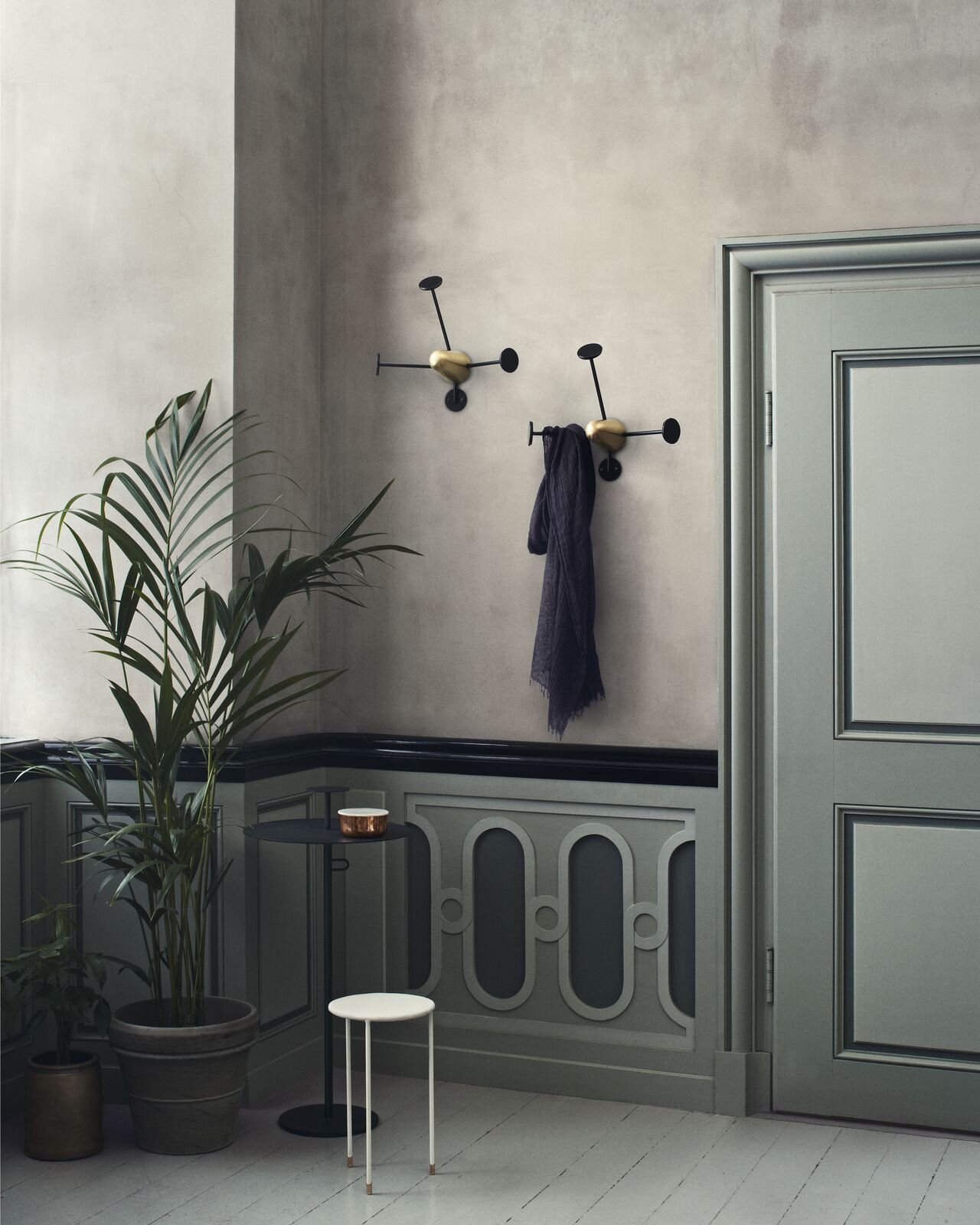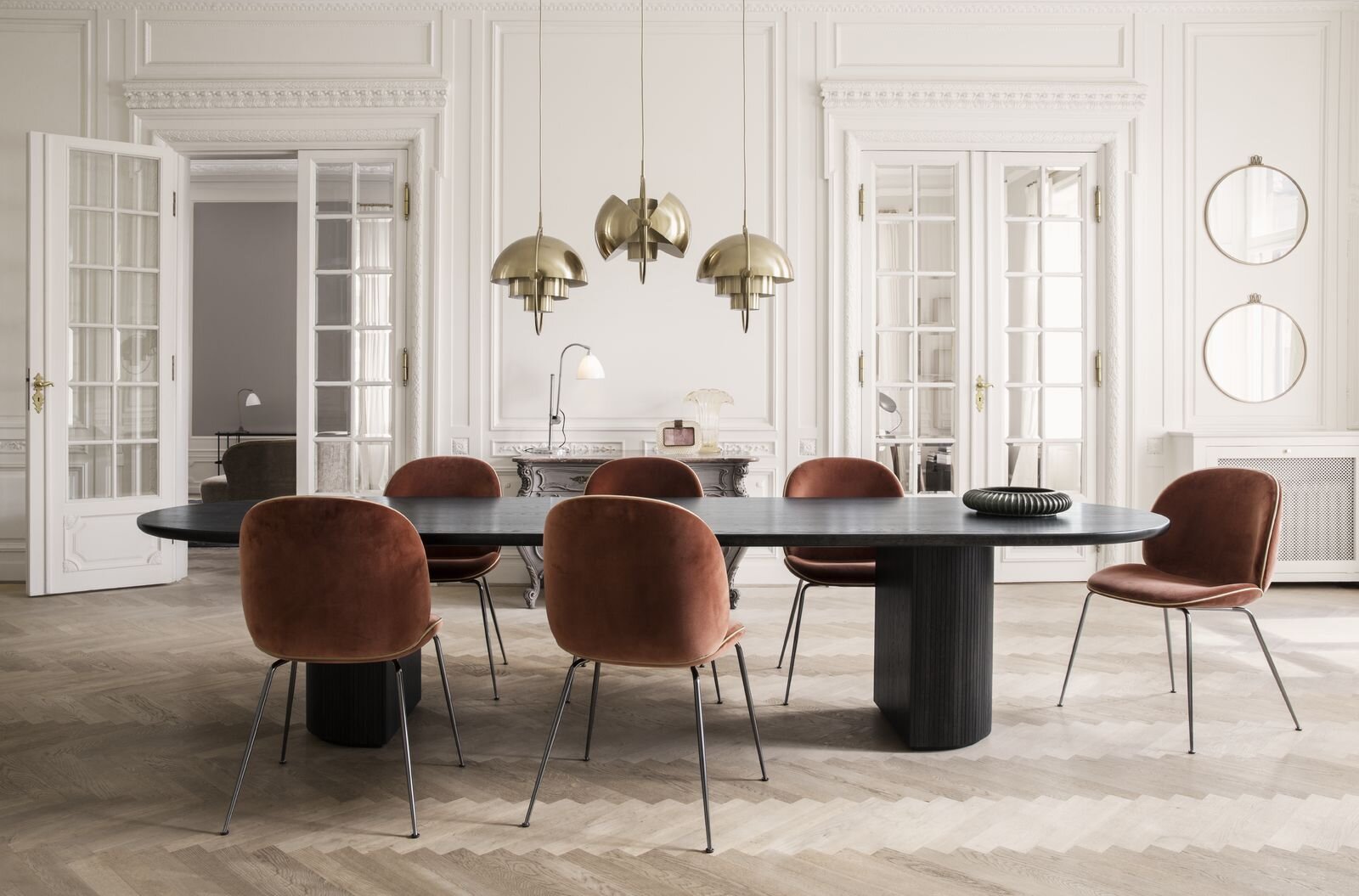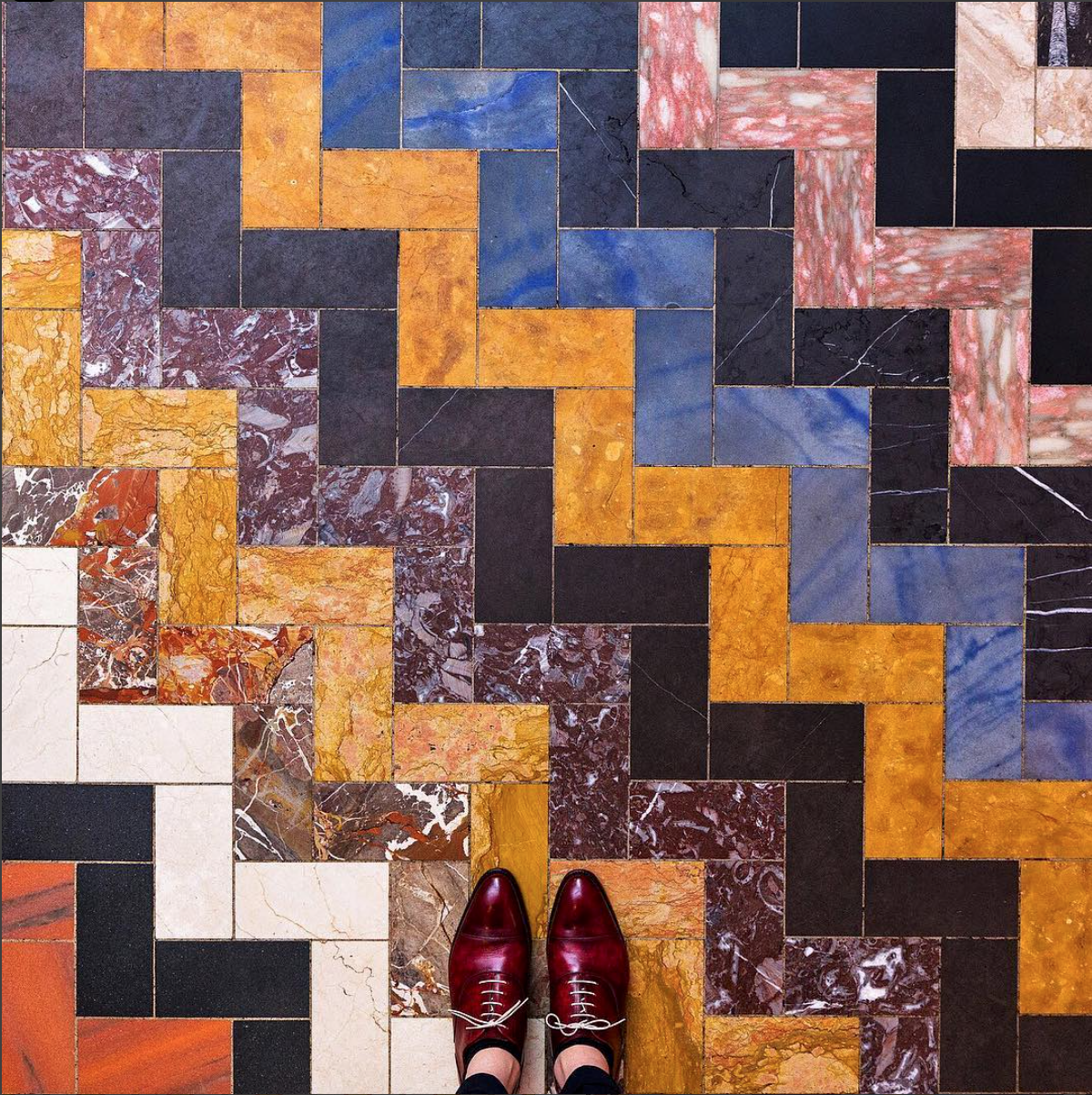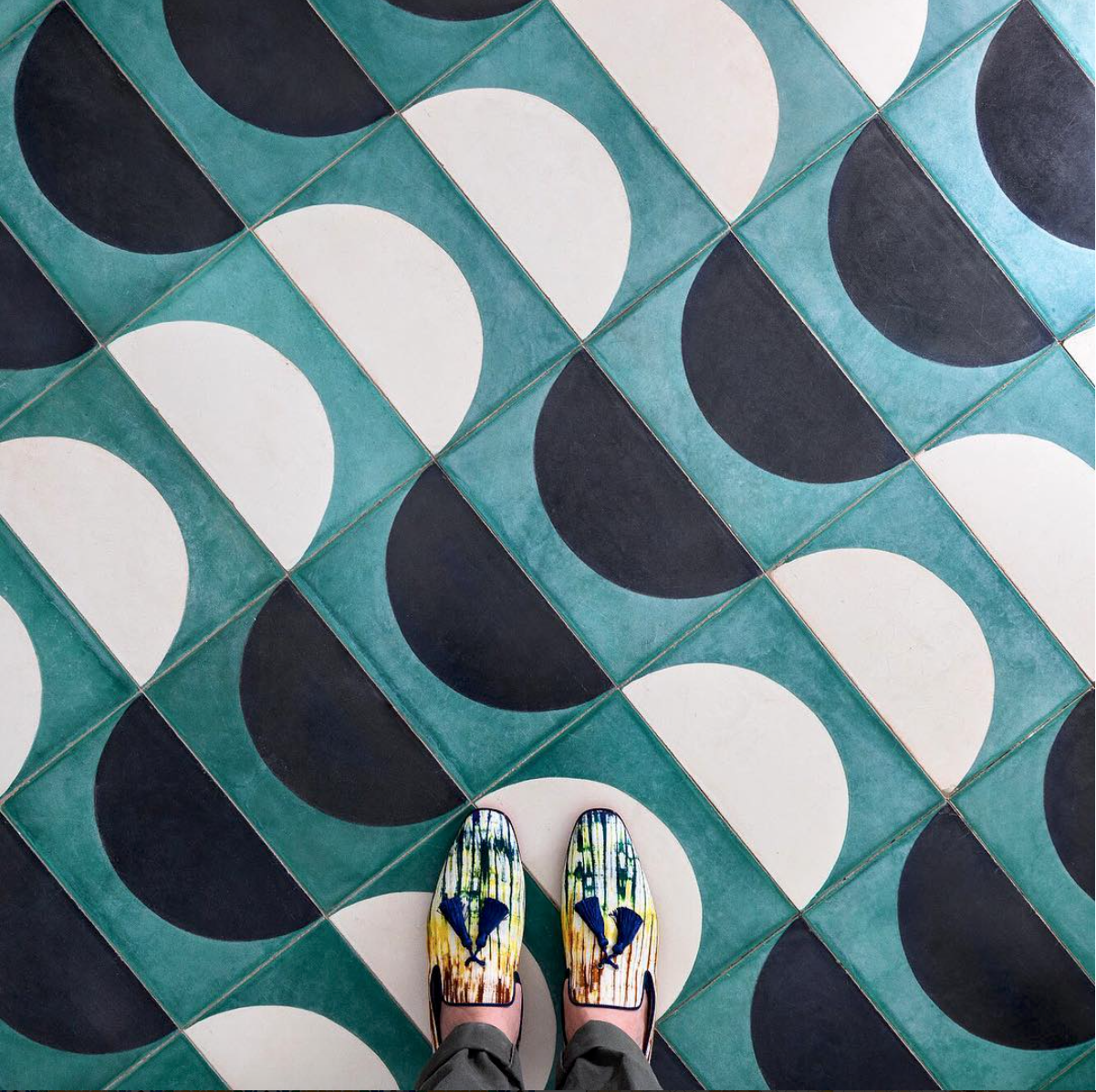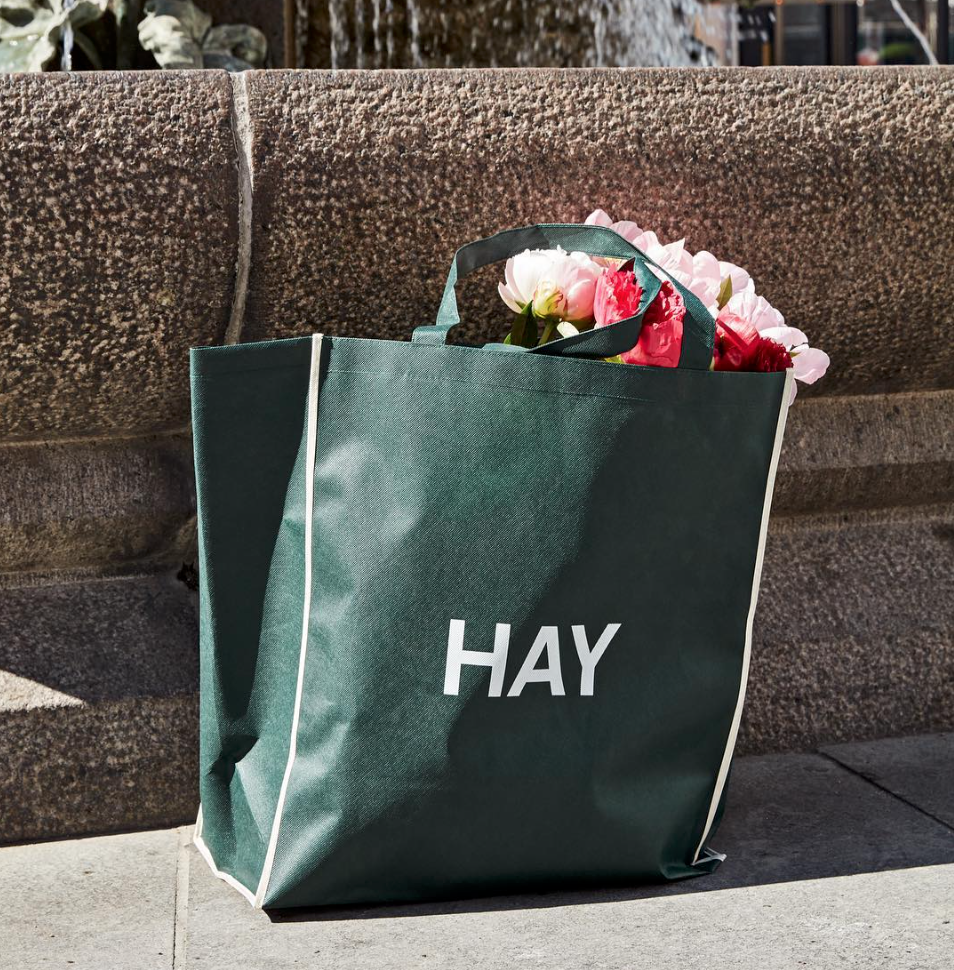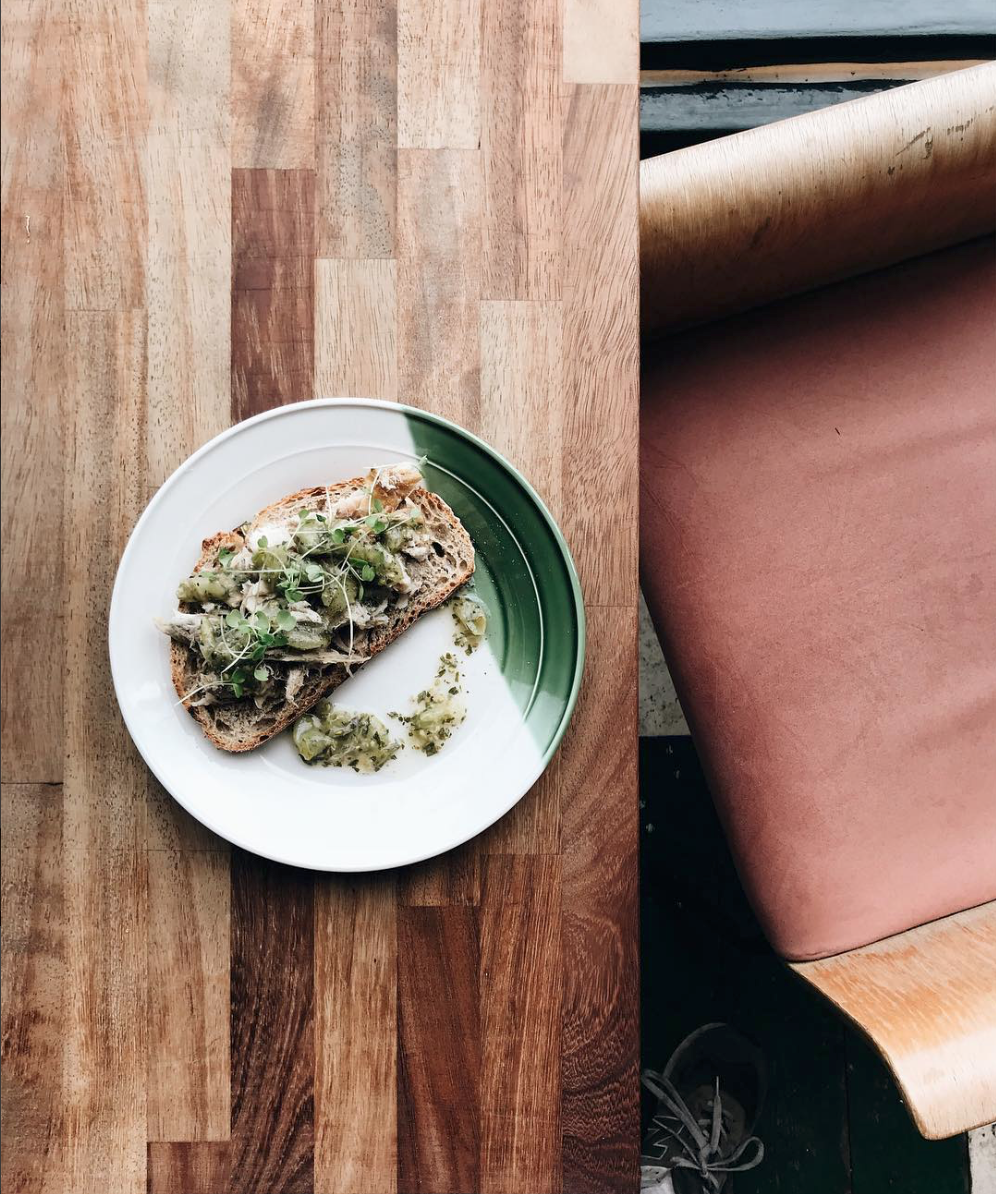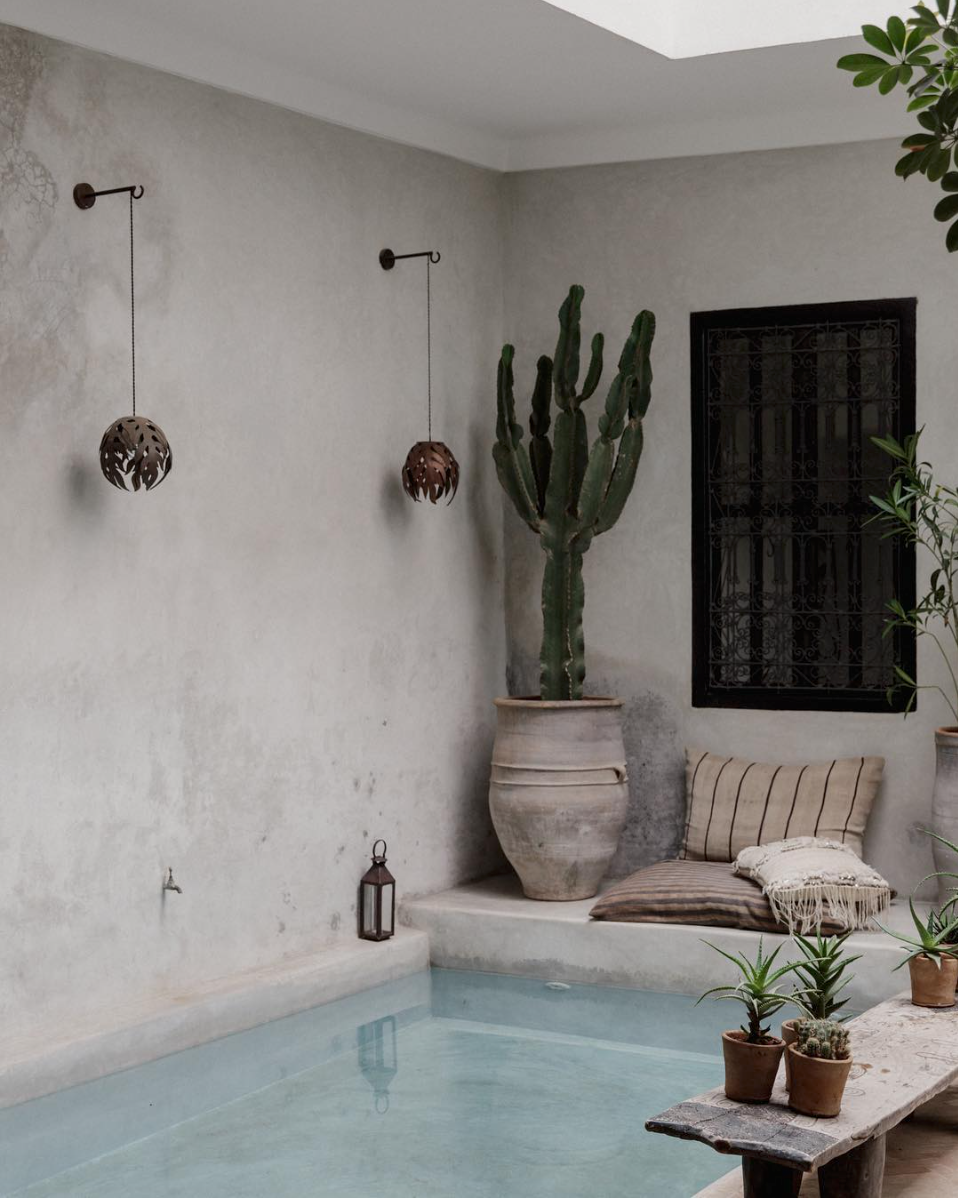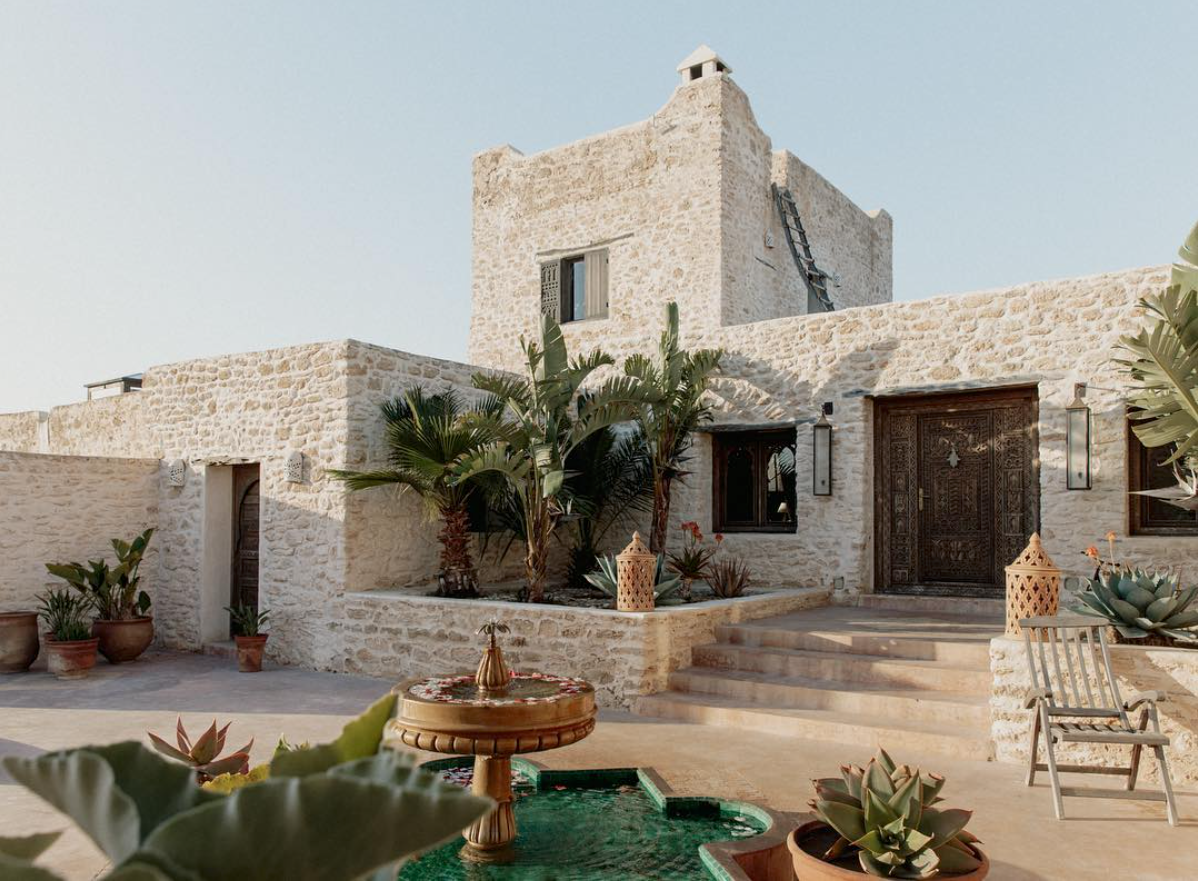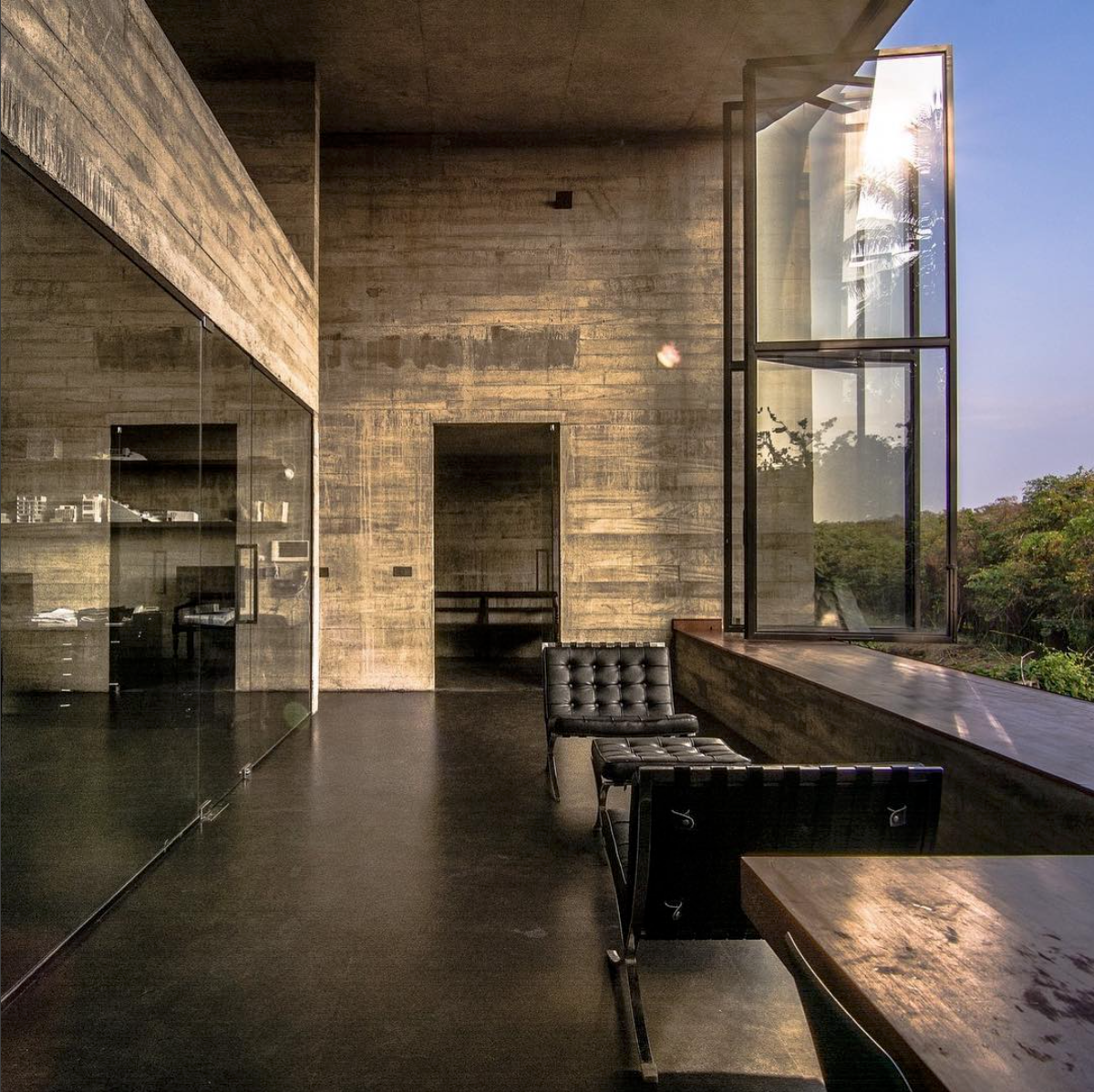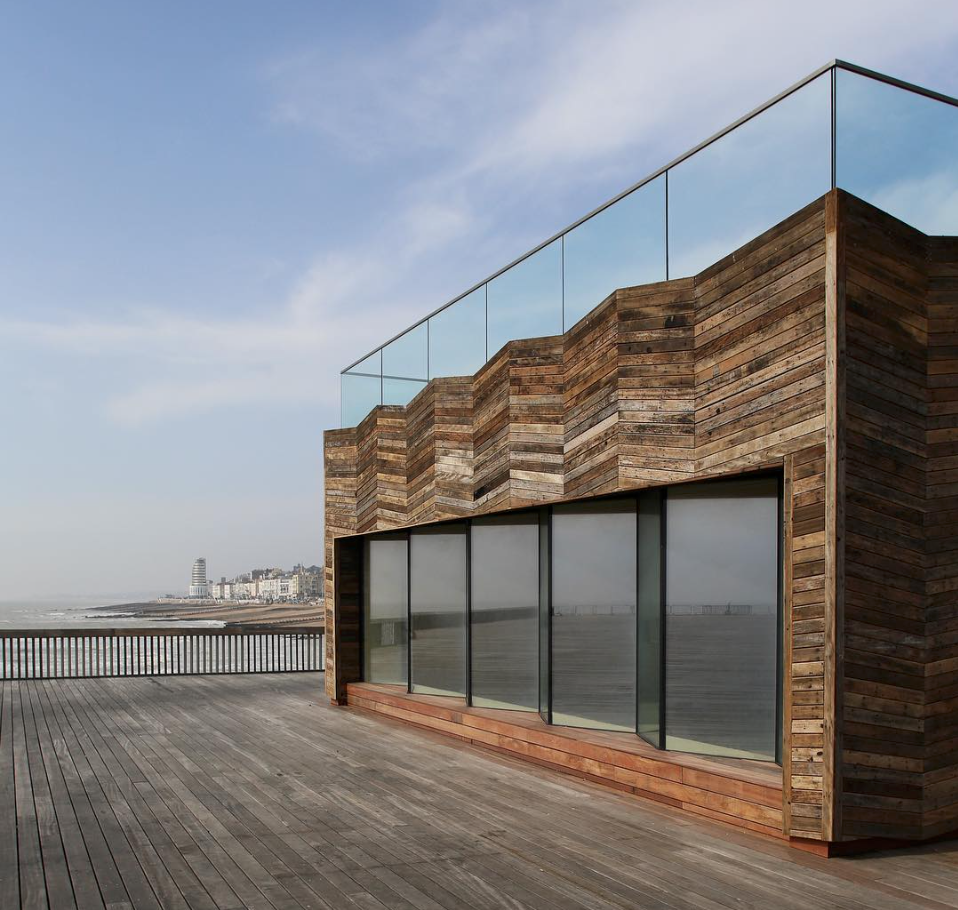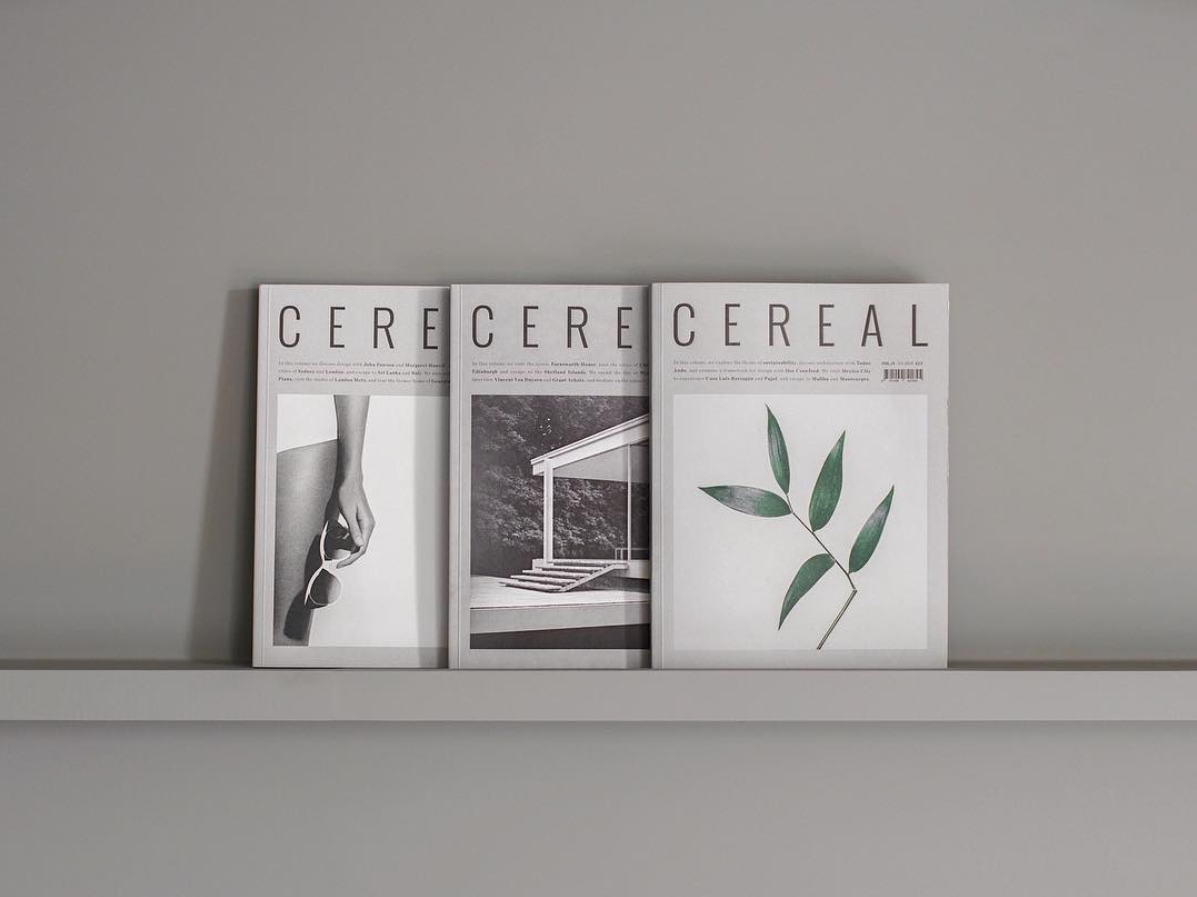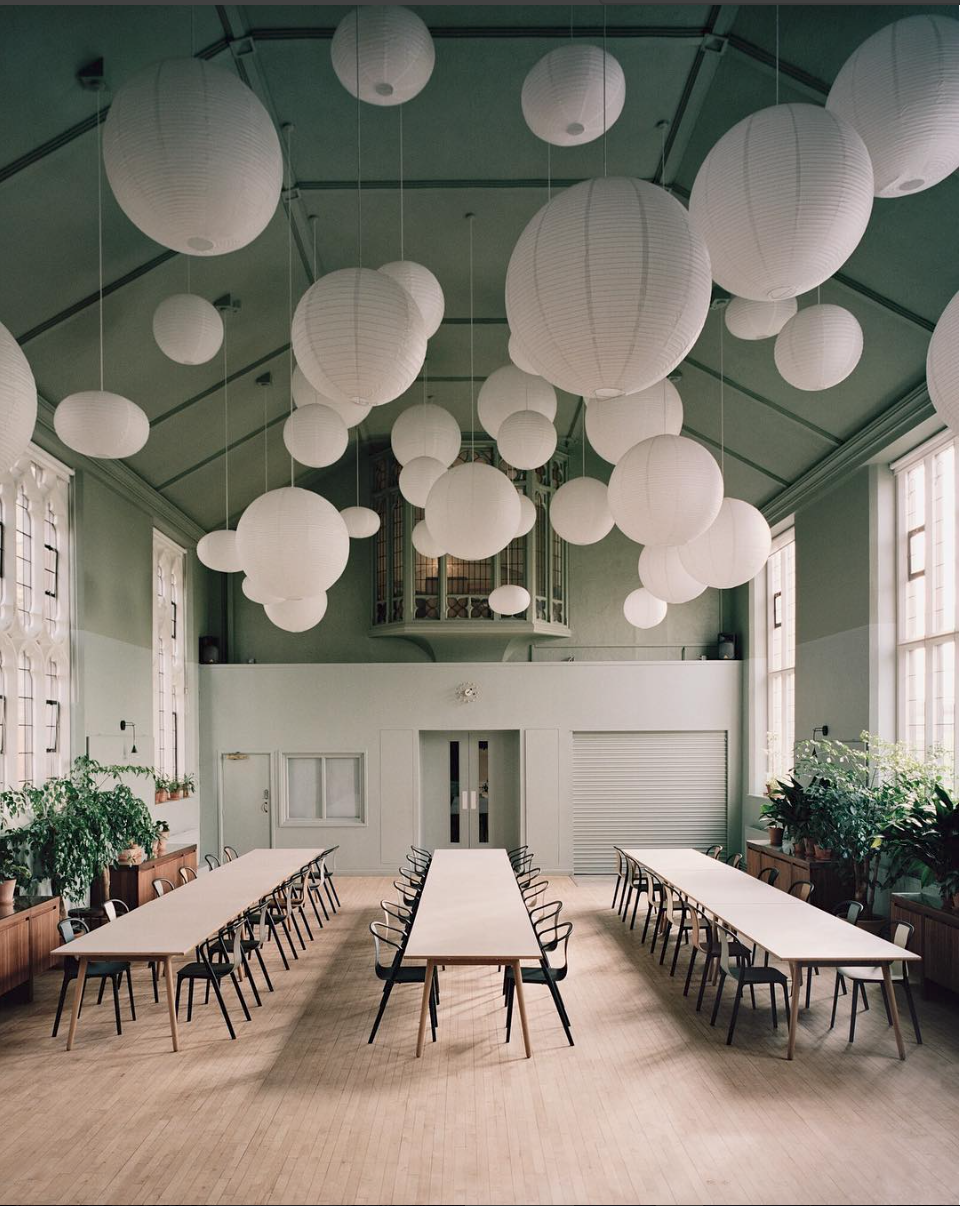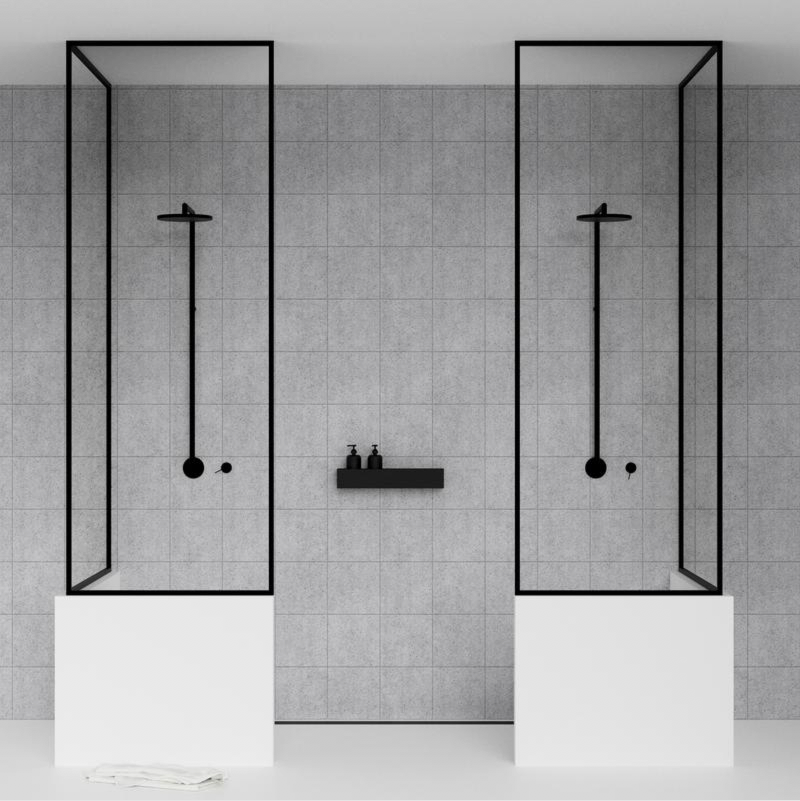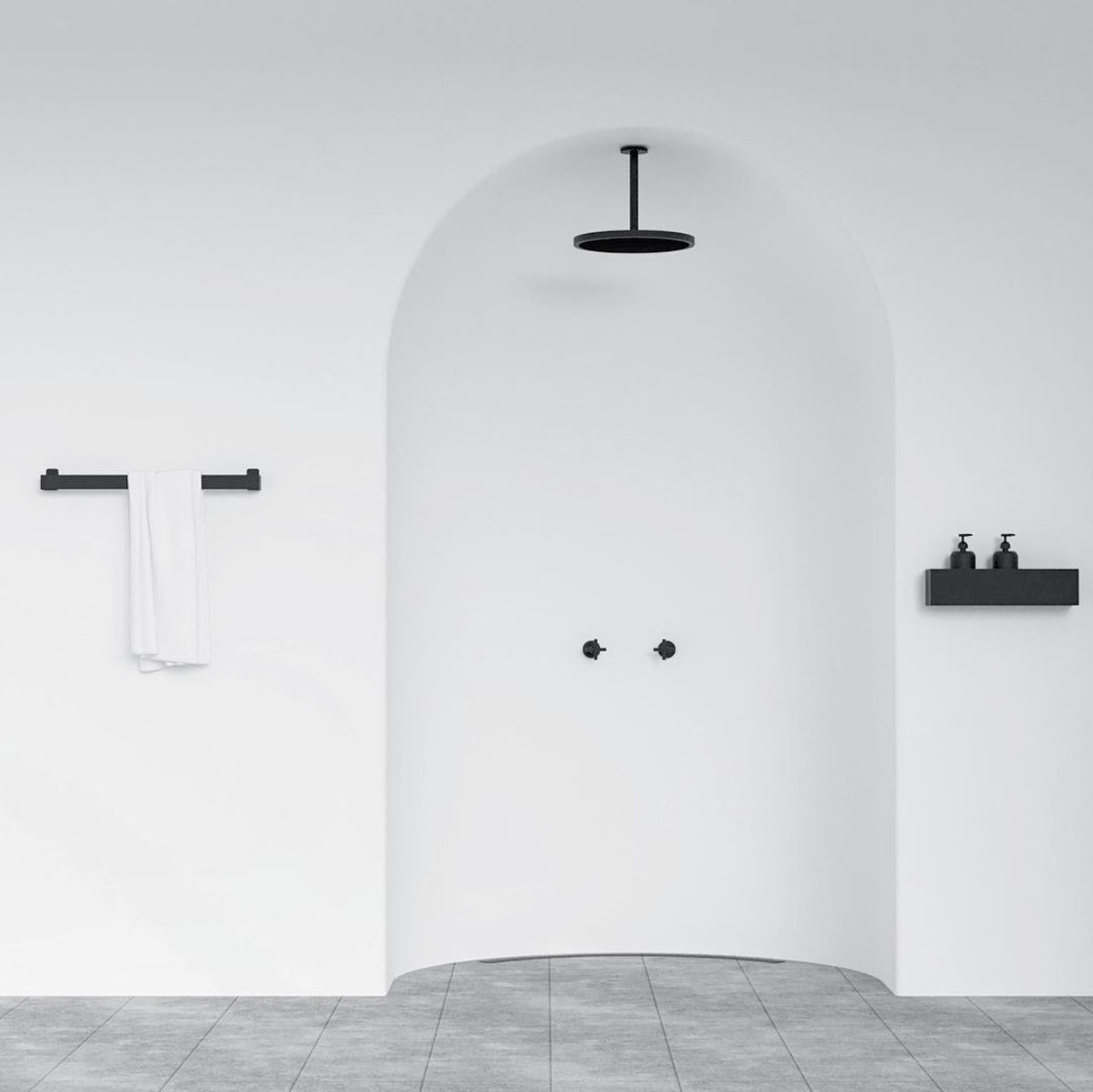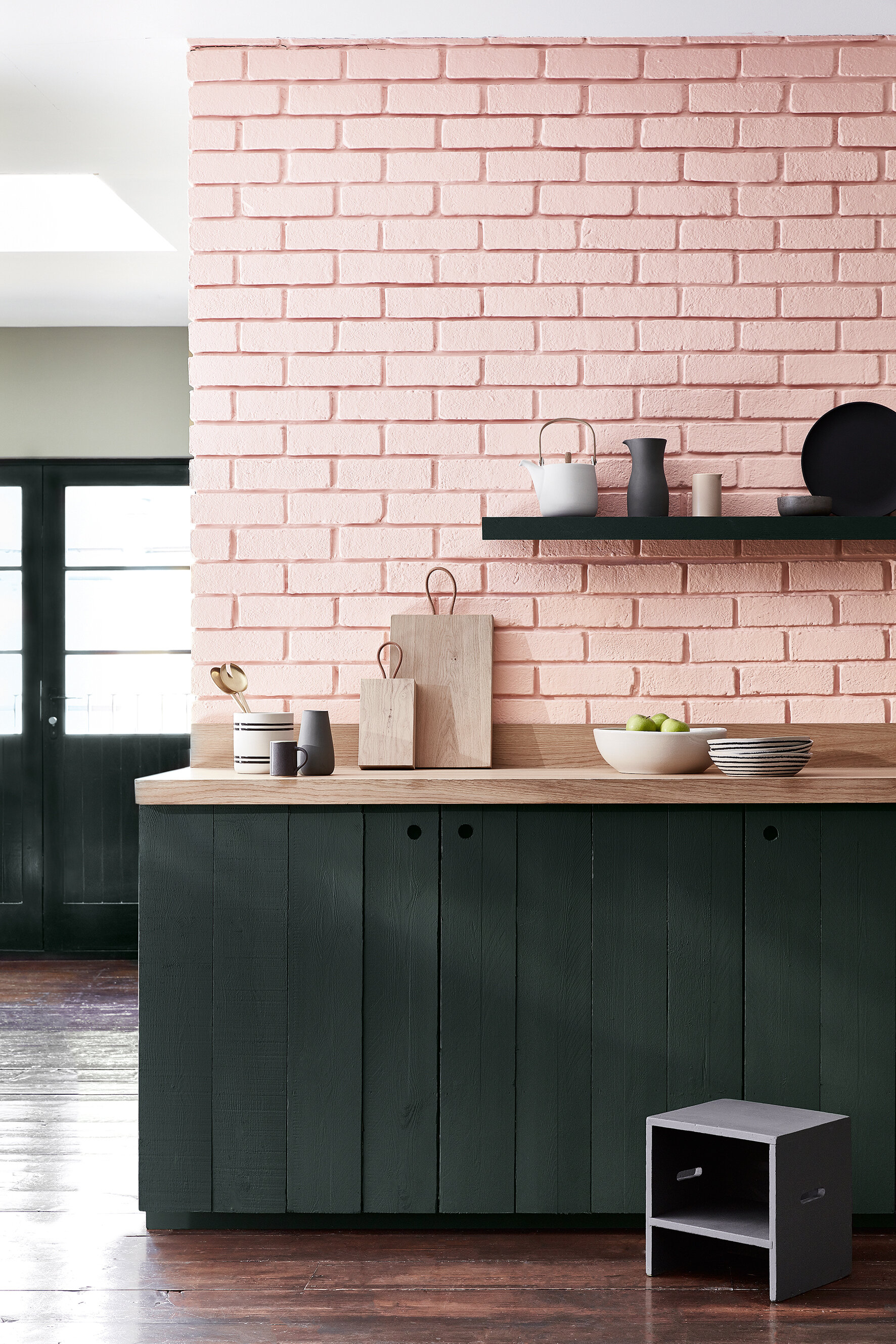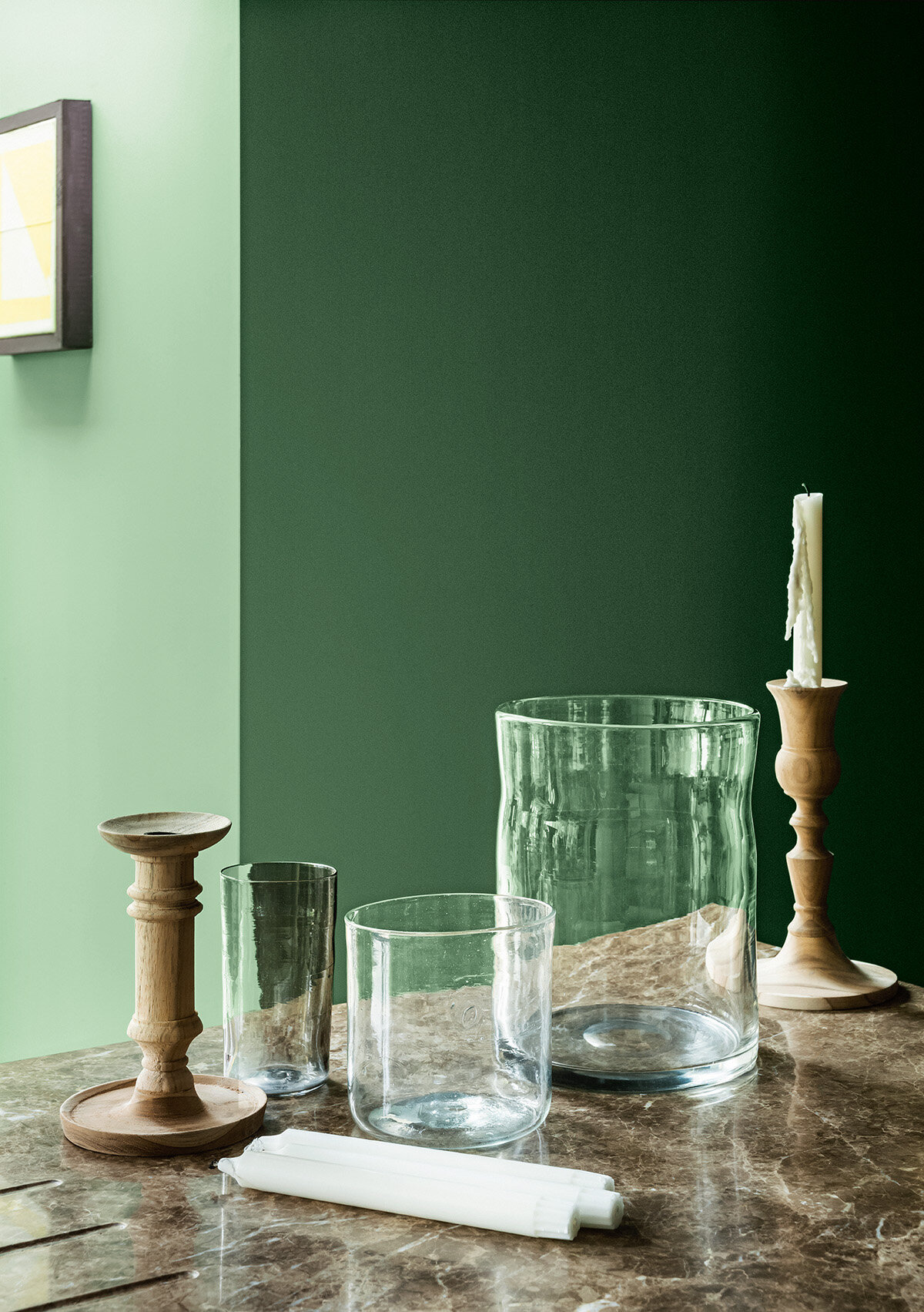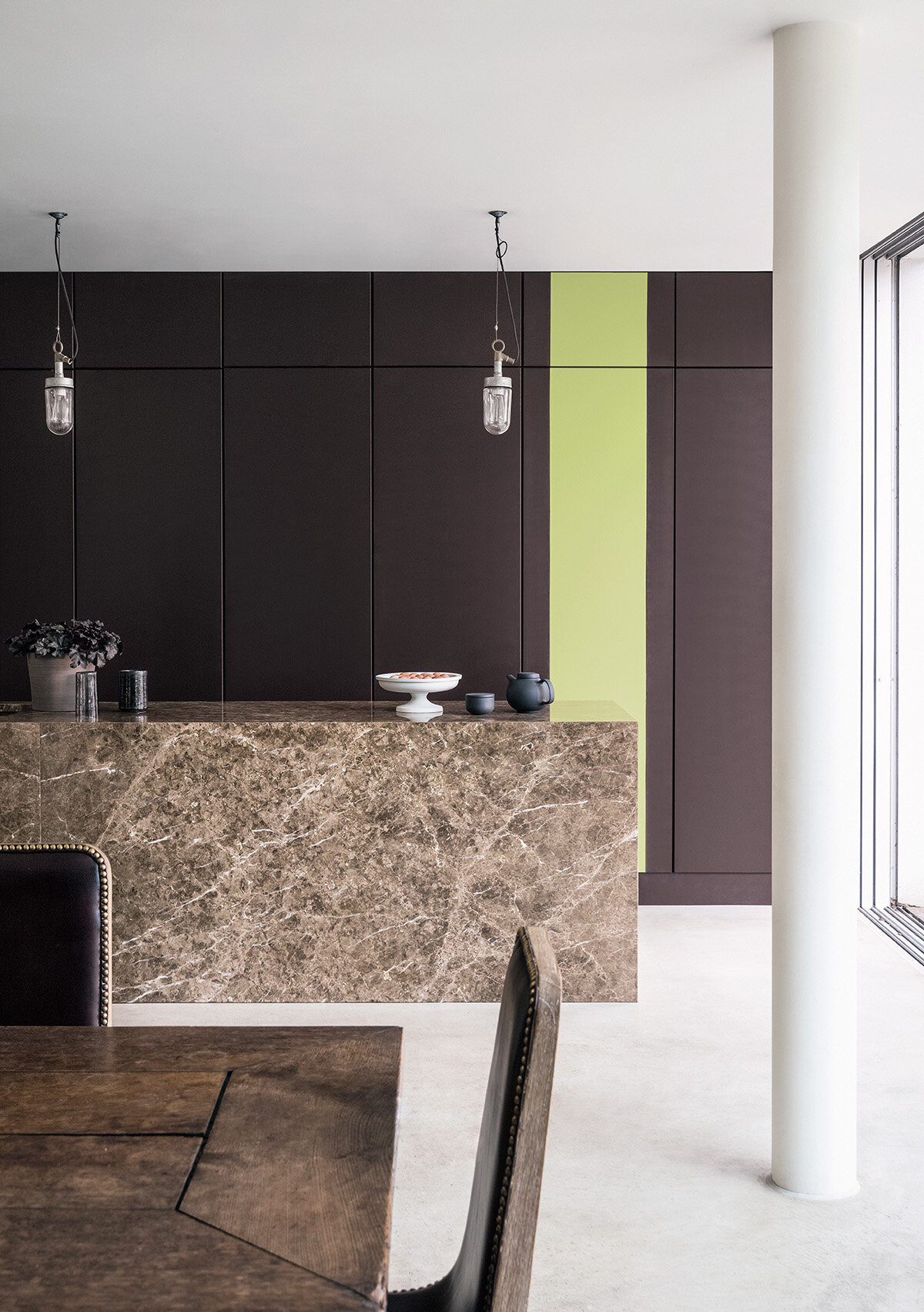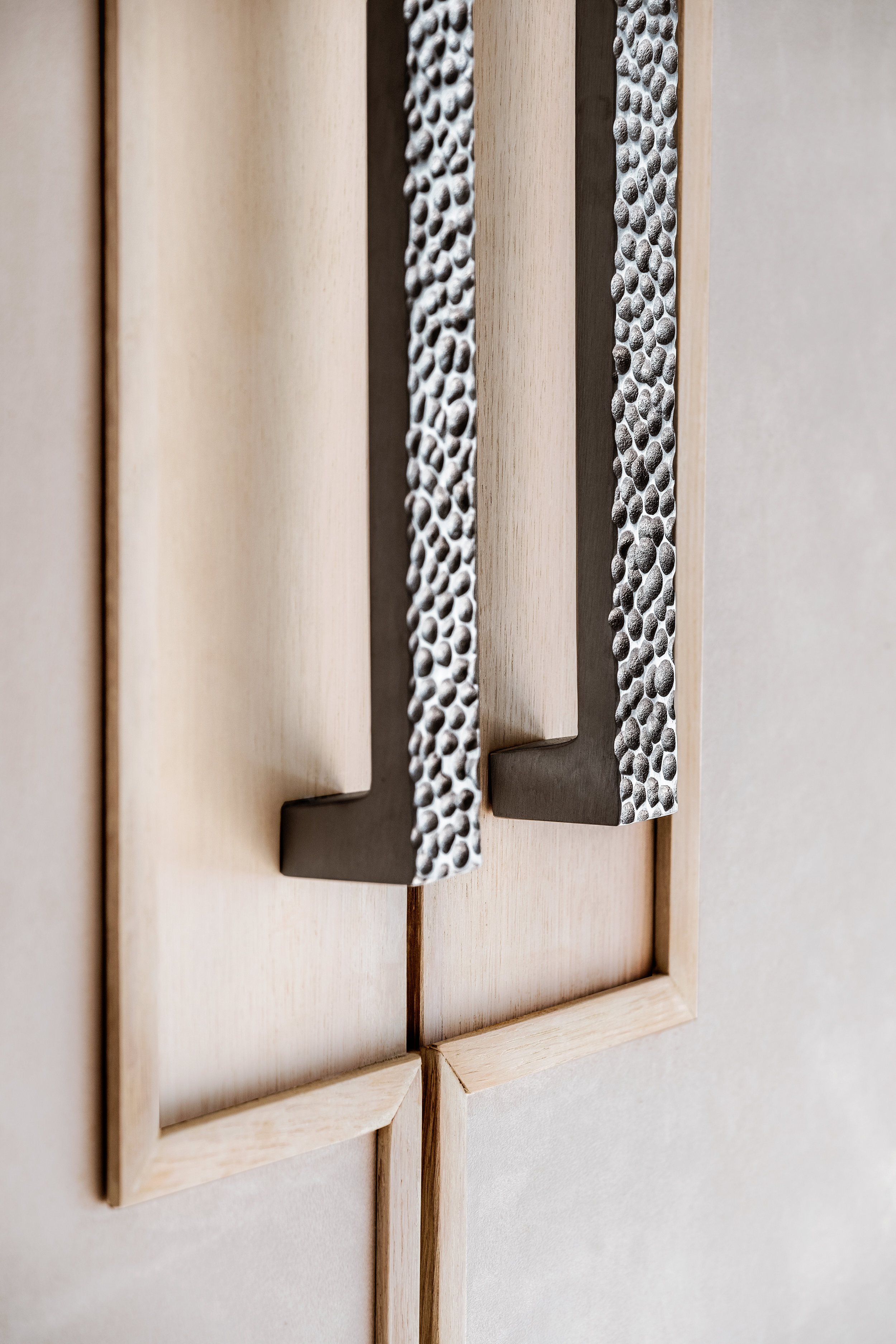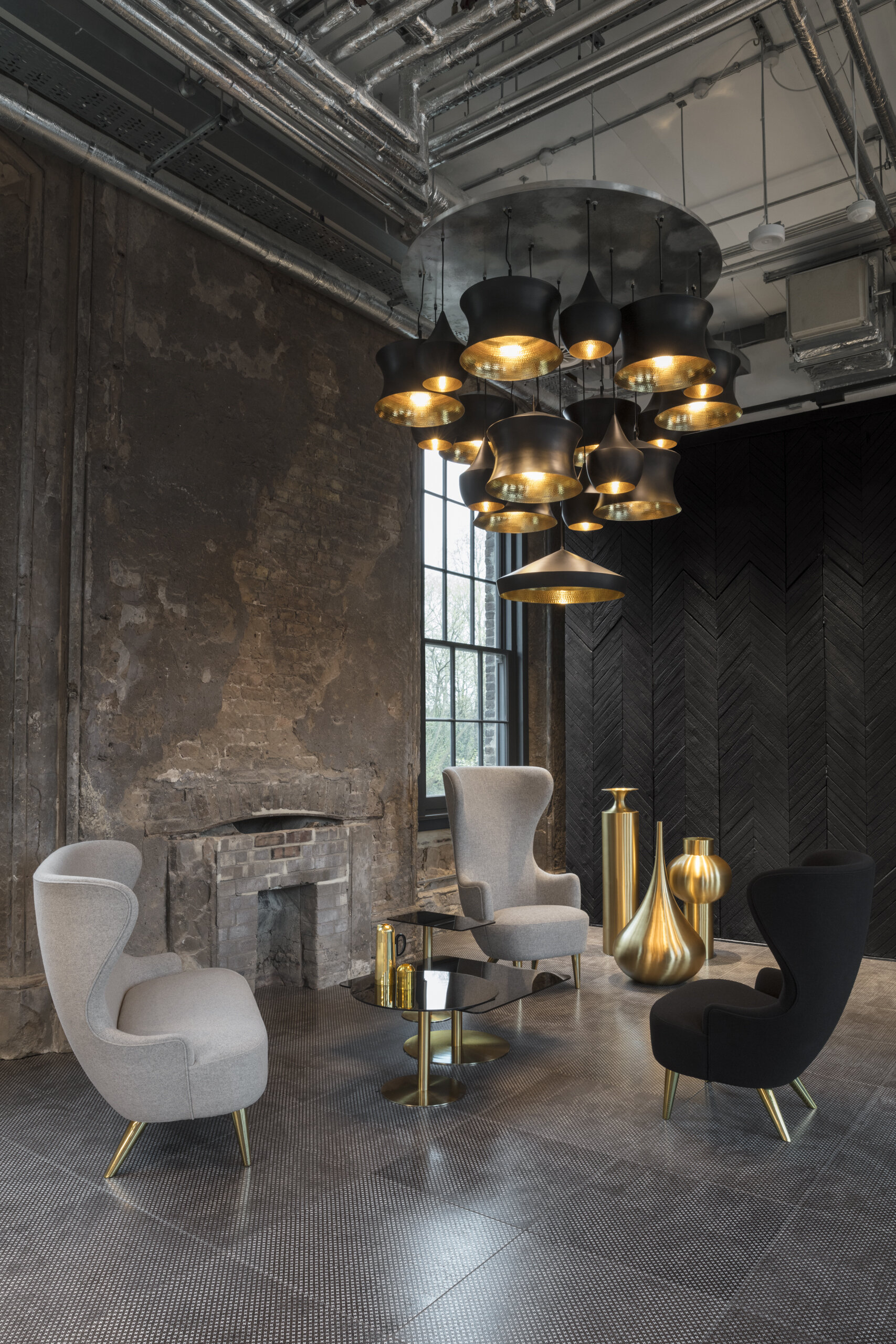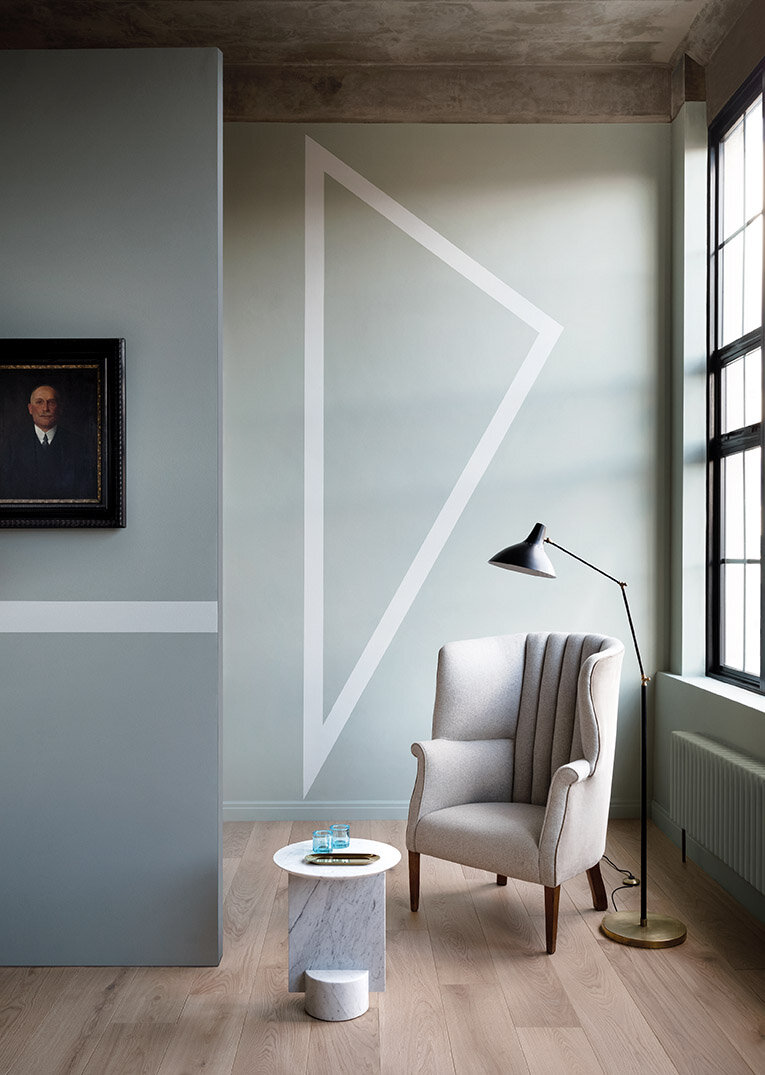Considered choices rather than expensive mistakes; Why you should appoint an Interior Designer
Interior design is a profession, not a hobby. When hiring an interior designer you are embarking on a valuable journey, utilising skilled practitioners who spend dedicated time developing designs and are able to draw upon years of knowledge - with refined technical capabilities and the experience to execute ideas into a reality. This weeks journal entry explores why an aversion to asking for advice leads to expensive mistakes.
Interior design is a profession, not a hobby. When hiring an Interior Designer you are embarking on a valuable journey, utilising skilled practitioners who spend dedicated time developing designs and are able to draw upon years of knowledge - with refined technical capabilities and the experience to execute ideas into a reality.
Interior Designers are literally experts in interior design. They are professionals, who have spent a minimum of three years studying, in most cases undertaking multiple placements within established firms before building extensive portfolios working within the industry.
It’s important to understand the difference between hiring an Interior Designer to that of an Interior Decorator - the latter will only able to make light aesthetical improvements whilst Interior Designers are skilled and experienced in executing bespoke, structural visions.
Interior Concepts
When hiring an Interior Designer you’re gaining their intellectual property, an intangible skill of creativity - a natural quality you either have or you don’t; creativity can't be learnt or taught.
The number one problem encountered when designing a space without a professional is caused by buying pieces before the design is complete. Without thorough research and extensive libraries of finishes and fabrics, ideas can’t be compared next to one another and the design will ultimately lack any sense of cohesiveness. It’s an expensive mistake, where you can end up with lots of things you like which simply don’t work in harmony together.
Designing an emotionally considered space is important too - acknowledging the various senses directly impacts how the final space will feel to interact with. As designers we encourage clients to consider mind over matter, thinking about the emotional needs of a space in conjunction with aesthetical aspirations. When going it alone this particular aspect of the design process is often ignored and final spaces lack individuality and a sense of self.
Interior Schemes
Once a concept has evolved into a clearly defined design the most complex part of the process begins and at this stage a lack of technical ability and precision could be costly. Bespoke design requires exact specifications and detailed technical drawings to aid space planning and room flows.
It can also be challenging to envisage something which doesn’t currently exist and without technical drawings or elevations the reality of a design could be quite different to what was imagined or intended. Our detailed elevation drawings allow for designs to be perfected, adapted and discussed with experienced craftsmen, ensuring bespoke designs are not only beautiful but functional too.
DETAIL Design and Installation
In many cases the little things, such as handles or switches, are often overlooked or ignored - despite the fact most of us connect with these smaller details on more than a daily basis. During the detail design stage of the process all details, big and small, are considered and hand-selected based on the individual client’s needs.
Most interior products, even when not produced bespoke, do involve a lead time. Planning orders and deliveries can be stressful and if not timed correctly can mean that storage costs are involved. It’s also extremely important that items are checked upon receipt, if damages during transit occur - which does happen occasionally - these must be reported to the manufacturer's in a timely manner; otherwise you may find yourself stuck with an item which isn’t fit for purpose. When working with an Interior Designer, all of the above is looked after for you with all the individual elements which make up your space arriving according to your project deadline, checked and unpacked safely.
The final installation process involves numerous skilled craftsmen working alongside and in tandem with one another. Electricians, joiners and decorators are just some of the skilled tradesmen who schedules need to be carefully planned in advance to ensure works are carried out in the correct order - according to the individual projects development stages. Without carefully planning works may need to be repeated and project deadlines are often extended dramatically. An Interior Designer can be utilised at this stage to not only plan and book all works in advance but also provide invaluable advice if adaptations due to unforeseen issues arise and to check works are carried out to a high standard.
Interior Design Services
Our residential interior design services are crafted to offer us the opportunity to work with a diverse range of clients. Our formally trained and experienced team work with client projects of various sizes, scopes and locations with varying deliverables, providing a high-end, luxury service we’re all extremely proud of.
Head here to learn more about the Rachel Usher Interior Design Studio Services
or if you have any questions please do get in touch here.
Rachel Usher Follows - Our top 10 interior Instagram accounts to follow
Instagram. It’s an outlet for creativity, filled with inspiration or perhaps even escapism with the power to influence our decisions - designers included. Here’s our top 10 interior instagram accounts to follow for a daily dose of dream worthy design.
Instagram. It’s an outlet for creativity, filled with inspiration or perhaps even escapism.
Viewing the world through a screen is perhaps ‘the’ modern-day phenomenon of our time. First it was food, then fitness and now interiors and architecture are also succumbing to the influence of our ever growing relationship with digital media...
Businesses are being challenged to make their physical premises as attractive and on-brand as their digital output, styled to look their best on social media as a way of luring in followers who seek the perfect photo-opportunity. This need is reshaping the design world with Instagram now utilised by many designers as a platform for inspiration and research - not just a means to document their own work.
Here’s our top 10 interior instagram accounts that we follow for a daily dose of note-worthy design inspiration.
1.
@Gubiofficial
Gubi's dream worthy designs translate into various interior styles, from Contemporary Luxury to Mid-Century and Scandinavian styles. Their instagram is a shrine to the brands iconic designs and shows that - no matter the setting or style - the eye is always drawn Gubi's evolutionary work.
“Designs that stimulate the senses, are beautiful yet usable. GUBI is pursuing perfection with passion and courage. Evolution is the essence.”
2.
@parisianfloors
Photographer Sebastian Erras explores the world beneath us through his Instagram feed, Parisian Floors - an account like no other. Documenting the colorful floors of Paris and beyond, Erras inspires us all to start watching our step.
“Travelling the world and exploring new cultures is a passion I try to fulfil as much as I can.”
3.
@haydesign
Contemporary furniture brand Hay have rapidly become synonymous with Scandinavian design, their Instagram feed is reflective of the more playful side to this design movement and feels accessible to all - As cool and casual as the brands founders Mette and Rolf.
“We are inspired by the stable structures of architecture and the dynamics of fashion, which we seek to combine in durable quality products.”
“We celebrate destinations, journeys, processes and the smaller details of life through our imagery.”
5.
@upshotsheffield
Upshot Espresso passionately believe all of the food and beverages that they offer should be approached with integrity. Their Instagram feed is menu of delicious visuals - beautifully presented dishes and authentic daily snapshots.
“Our approach is to only brew coffee that is traceable, sustainable and impeccably roasted.”
6.
@theperfecthideaway
The Perfect Hideaway believe that travel feeds the soul and their Instagram account beautifully documents this with design-led properties for the modern traveller.
“It’s not about luxury, it’s about experience. To me, that is heavily influenced by the space itself and the people who created it, and ultimately, how it makes you feel.”
7.
@riba
The Royal Institute of British Architecture are well-known for their work supporting British Architects. Their Instagram account plays with different aspects of the design process through various types of media - Inspiring to both industry insiders and lovers of design in gerneral.
“We serve our members and society in order to deliver better buildings and places, stronger communities and a sustainable environment. Being inclusive, ethical, environmentally aware and collaborative underpins all that we do.”
8.
@cerealmag
Cereal is a bi-annual magazine about travel and style and their Instagram feed reflects this with moody contemporary snapshots of various subject matters - from dreamscapes to luxury hotels and fashion.
“Each issue focusses on a select number of destinations, alongside engaging interviews and stories on unique design, art, and fashion.”
9.
@nichba_design
Founded by Danish metalworker Nicholas . Anderson, Nichba Design utilise Instagram to showcase the brands minimalistic crittal designs which are simple and streamlined whilst honouring traditional manufacturing methods.
“Denmark is a nation of proud craftsmen and I want to represent that too. It is important to me to maintain the traditions and craftsmanship.”
10.
@thespacesmag
The Spaces is a digital publication which features inspiring residential and commercial buildings that are pushing boundaries and changing how we experience a space.
“Exploring the rich urban fabric of cities across the world, we want to inform and spark new conversations about design and property, while inspiring people to look at their environments differently.”
Triennial Bruges; Architectural artworks
Ever since Triennial Bruges inaugural 2015 debut, contemporary architects and artists from across the globe have been invited to the city, commissioned to create experience based constructions which encourage a thought-provoking social atmosphere. This year, with the overarching theme of ‘Liquid society’, Triennial contemplates our rapidly changing world; as established ways of life are under pressure, what does the future hold?
International artists and architects were invited to think about this question, in particular the consequences of liquidity in the city, in an age where nothing seems certain. The result is 15 works of art, installations and social spaces spanning across the historic city in perhaps unexpected places. The objective is to encourage people not only to view each artwork but to experience them and become part of the creative process. Here's what we think are the top five architectural experiences from the pavilions showcased...
1.
OBBA - The Floating Island
Designed by Sojung Lee and Sangjoon Kwak, the duo behind Korean architectural firm OBBA, ‘The Floating Island’ makes walking on water a reality. Located on the canals near Snaggaardbruf, the environment provides a whole new perspective of the city, covering over 100 square metres. The installation is surrounded by green islands, all accessible to the public to take a break, stroll along or make time for enjoying the surroundings - relaxing on hammocks or couches which lean right over the water.
2.
Renato Nicolodi - Acheron I
With several solo exhibitions under his belt, Belgian artist Renato Nicolodi is already well known for his sculptural installations. Acheron I is an installation in the canal, a sombre concrete pavilion leading visitors towards the water - inspired by the Greek word achos; a mythological “river of sorrow” that’s believed to give access to the underworld. The sculpture is intended to “Represent a haven, a gateway between the present, future and the past”.
3.
Selgascano - Selgascano Pavilion
Spanish architects José Selgas and Lucía Cano of Selgascano Studio are well known for their use of synthetic materials and innovative technologies within design and the Selgascano Pavilion is no exception. Constructed in transparent vinyl, the organic installation floats between the city’s brick buildings along the canal as a spot to stop and take time to absorb the historic surroundings. The location on the canal, which is mostly closed off from the main links, allows for people to wade in or even swim. - subject to water the quality on the day.
4.
Jarosław Kozakiewicz - Brug
Jarosław creates a contemporary interpretation of the many bridges which span the canal network across the city centre . The artist’s use of metal profiles and canvas creates a bridge which is functional, allowing people to cross, whilst encouraging a brief pause as the installation ends viewing the statue of Niobe by Constant Permeke. The structures design is based upon a proportional system linking to the human face which Jarosław uses as a metaphor for mutual encounters between human beings from the future and past.
5.
John Powers - Lanchals
The New York-based artist John Powers draws inspiration from the rich history and folklore of Bruges to create the architectural installation; Lanchals. Erecting a meter-high sculpture in the form of a swan’s neck, Power’s links the the piece to the Archduke Maximilian Pieter Lanchals who was killed during an uprising in the 15th century against urban privileges - Legend has it that in memory of this event, the city had to allow 52 swans on to the various canals.
Triennial Bruges 2018 is open to the general public until 16 September 2018. For more information and specific event experiences head to the official Triennial website.
Sustainable Paint; Where creativity and responsibility unite
You will already be aware of the transforming effects a simple coat of paint can provide to a space. The toxic components used to create many well-known paint products however are generally not acknowledged, causing damaging environmental effects to our planet. In 2018 ignorance is no longer bliss and so this weeks journal entry explores the importance and benefits of luxury eco-paint; a product that remains creative whilst honouring our environmental responsibility.
Sustainable Paint; Where creativity and responsibility unite.
In 2018 ignorance is no longer bliss. The importance of environmentally responsible products is gaining momentum, luxury paints included, but identifying brands which produce with minimum ecological impact can still be notoriously difficult...
How paints are formulated isn’t something most people are acutely aware of - or even think to question yet the reality is most well-known paint producers create their colour ranges with toxic chemicals which are not only bad for the environment but also our own health.
Most modern-day manufacturers create their paints using the three main components of pigment, binder and a carrier. Many of the ingredients used within these combine toxic chemicals such as cadmium, lead, chromium, petrochemicals, solvents, benzene, and formaldehyde as well as volatile organic compounds otherwise known as VOCs. Whilst organic, the chemical compounds of VOCs evaporate easily into the atmosphere and so are a particular concern environmentally, contributing to climate change.
Numerous health problems are linked to these chemicals, from less severe issues such as eye irritation to problems much more serious; respiratory disease, asthma, skin disorders, liver or kidney damage and even cancer. The most concerning aspect of these chemicals however is the fact that many paints continue to emit dangerous VOCs years after their initial application.
Due to rising industry concerns environmental regulations have been put in place, forcing paint manufacturers to reduce their VOC content however many brands still include solvents and chemical pigments.
There are however a handful of brands who are pioneering with non-toxic paints, acting positively and responsibly to minimize the ecological impact paint has to both ourselves and the wider environment. Two brands in particular, Little Greene and Paint & Paper Library are revolutionary in their approach, producing luxury, high quality paints which remain creatively progressive whilst honouring their social commitments.
Little Greene
Little Greene are a brand whose philosophy is centered around a commitment to protecting the environment and in 2004 they were one of the first brands to achieve the required environmental standards. Every aspect of their business is considered against this philosophy whilst ensuring no compromises are made within the products they manufacture.
Little Greene's water- based paints carry the paint industry's lowest eco-rating with VOC content at virtually zero. This eliminates any concerns regarding solvents releasing into the atmosphere and any respiratory issues which could otherwise have been affected. Oil-based paints are formulated using sustainable vegetable oils without compromise on quality, renowned within the industry for their superior finish and longevity.
Paint tins are produced using recycled steel with the added benefit of being able to be recycled again after use - another instance where Little Greene strives in comparison to their competitors. The company has also recently moved into a new head quarters located in Manchester, designed specifically around their eco-values with solar powered energy for both their general offices and paint manufacturing.
Paint and Paper Library
Paint and Paper Library are another brand whose values align with long-term environmental sustainability:
“With creativity comes responsibility and with beauty comes duty. We make every effort to minimise any negative impact on the environment and health.”
Every product they produce is made by traditional methods, incorporating eco-friendly ingredients which not only make a visual impact but positively exceed current environmental regulations, including VOC.
Sustainable Paint Stockist
Little Greene and Paint & Paper Library are two brands we regularly specify within our projects, not only for aesthetic appeal but for the numerous health benefits too - which improve the overall experience of any space.
We’re also prestigiously part of both brands carefully curated stockists and so we’re able to the supply to the general public. As part of our own environmental commitments all paints are made-for-you with fast-tracked delivery.
Our studio is open Monday-Friday 9-5, for further information please get in touch via our contact form.
Bespoke design; The power of personalisation
The value within bespoke design is often underestimated. It’s a process commonly associated with kitchens or bathrooms only, a limited view in our opinion which dismisses the true power of personalisation. This weeks journal entry explores how bespoke design can be utilised to create an interactive, personalised art form in any space.
The value within bespoke design is often underestimated.
It’s a process commonly associated with kitchens or bathrooms only, a limited view in our opinion which dismisses the true power of personalisation.
When crafted with care bespoke design can add enormous amounts of value, not just in aesthetic appeal but to how a space feels to interact with on a daily basis. There’s a widespread tendency to define bespoke interiors as only the larger, often more expensive elements within a space and it’s easy to ignore the little things, such as handles or switches, despite the fact most of us connect with these smaller details on more than a daily basis.
“Every individual element within a space should speak to us positively on a sensual level. The depth and quality of a design is most tangible when we come into physical contact with it and so influential touch-points such as handles or fabrics are extremely significant.”
Carefully selected bespoke finishes provide both purpose and pleasure, incorporating high quality craftsmanship which bestows us with confidence, knowing each piece will last a lifetime as intended. As a design approach we’re allowed the freedom to create in a unique way which ensures all designs are truly reflective of the clients needs and aspirations.
Limitations are a construct and when design is approached in this way inevitably compromises are made. When faced with a design dilemma the most successful solutions to a problem are often found through utilising a bespoke approach, avoiding compromise and transforming an element previously regarded as a pain-point into a positive piece of the overall scheme.
“Approaching a design through bespoke solutions removes all of the boundaries that would otherwise limit our creativity, allowing us the freedom to create truly considered interior designs which are unique, make the most from the architectural space and enhance the overall emotional experience.”
A bespoke approach can be utilised anywhere, finishes, lighting, cabinetry and furniture are all worth investing in as when truly considered each will improve how a space feels to interact with.
Visually, creating unique bespoke designs subsequently forms a piece of art which you're able to interact with on a personal level. Art as a term may be subjective but is defined as "An expression of creative skill and imagination, produced to be appreciated primarily for its beauty or emotional power" - important qualities afforded by the adaptability and personal nature of bespoke. Just like artworks in gallery, bespoke design is there to be appreciated but when applied within a living or functional space the impact these pieces have is much more fluid. We're able to connect on a much deeper level, most due to familiarity, noticing every seamless detail; another reason why high quality craftsmanship is so important.
“There’s nothing like sitting back, relaxing and observing pieces which are truly bespoke. Letting your mind wander over each beautifully crafted edge, join or seamless finish.”
Bespoke design is by nature precise, crafted to exact specifications and considers the finest details, whether that be how the piece sits within the architectural space or most importantly; how the piece integrates with a clients lifestyle.
Crafting individual designs which seamlessly flow within a space requires technical expertise, functional planning and tailored creative solutions; skills our studio team are both knowledgable and experienced in executing. If you're currently thinking about working with an interior designer and are interested in residential or commercial design services, take a look at a our design service experience guide, or get in touch with the studio directly.
The Coal Office; a holistic experience
Against an industrial backdrop, Tom’s Dixons new HQ, The Coal Office, leads the way as a multi-disciplinary space for innovation in design.
A fresh London home for Tom Dixon’s latest experiments, innovations and collaborations.
The Coal office is designed to push the boundaries of contemporary retail as we know it.
Later this month, the internationally renowned brand Tom Dixon opens it's doors to the design brands most ambitious development yet. Located in the heart of London’s Kings Cross, the new hub contributes to an ever-expanding network of creative businesses within the area. We were lucky enough to be invited to a private press-preview this week, for a first look at how the space has been transformed...
“For us it was imperative not just to find a new office or shop. It was vital to find a new home. London isn’t just another city. It is where it all started. We will use these 17,500 square feet in this incredible location as a platform to broadcast our latest ideas in interior design, product innovation and experiments in food, functionality and future living.”
Against an industrial backdrop the Coal Office is set to lead the way as a multi-disciplinary platform for innovation in design. The space will function as a live studio combined with a gift-shop, workshop and office all under one roof, with the culinary delights of a brand-new restaurant and roof terrace - to be launched later in the year, towards the end of June.
The Coal Office will serve as the ultimate centre for interiors, a journey through outstanding details from beginning to end. The lower ground store and showroom is a sensory journey, something which the iconic buildings architecture naturally lends itself to. A series of large archways split the space, allowing each sensory element to shine individually whilst harmoniously flowing into one another through the continued details of exposed brickwork and large-scale hardwood floors.
Each individual archway and the sensory visions of light, colour, tactility and scent within it, are all carefully considered in the new premises which notably isn't named after the Tom Dixon brand itself; a conscious decision to allow each element to breathe with room for creative collaborations from younger craft studios and complementary businesses; hand-selected for cohabitation by Tom Dixon personally.
In celebration of the unique history of the building, which dates back to 1851, edible installations celebrating the power of coal by food concept studio Arabeschi di Latte were served on the day, along with new product presentations and a tour by the designer himself. To preview the emotionally considered space before it opens to the general public at the end of this month, head over to our Instagram account here.
Opening Dates and Times
Shop Opening Date: Friday 20 April, Monday - Saturday 10am – 7pm, Sunday 11am – 4pm.
Restaurant: Opening late June 2018.
Address: Tom Dixon, The Coal Office, 1 Bagley Walk, London N1C 4PQ
A conscious focus on tactile interiors
Simply looking at something often isn’t enough. Aesthetics are important but our curious nature often directs the most important of all our senses, touch...
Identifying if a space looks good is easy. Understanding why we feel positively connected to it is more complex...
As Humans we have evolved using the sensory stimulations we’re surrounded by and, more often than not, we subconsciously measure a space and define its value to us based on our emotive experience.
When we visually absorb textures our minds automatically lead us to thinking about how surfaces feel to touch. We make assumptions on what a texture may feel like based on memories of tactile surfaces we’ve made contact with before.
Our sensory stimulations can work for, or against us
Harnessing tactility within a space is integral in forming a comfortable environment; whether that be warm and relaxing or cool and light. When consideration for the touchy-feely elements are ignored the opposite occurs; creating a space you inhabit rather than experience.
Surface textures are a fundamental element within interior design as they form the visual temperature of a room. Smooth surfaces for example reflect light and provide a cooler, more open impression whereas raised textures, which absorb light, convey a sense of warmth and relaxation.
Look around and you’ll see tactile elements are applied in more places than you might think; walls, ceilings, flooring, furniture and even the exterior of a building all incompass textural components. Where we apply texture can change our perception of it; how light interacts with a surface and how closely we interact with it heavily influences our emotive response.
When selecting tactile elements it’s important to incorporate complementary textures, that play off of each others distinctions; creating a balanced environment. Rough surfaces for example can seem much more textured next to a smooth surface, which depending on the needs of the space; could work for or against you.
Carpet is another great example as naturally it reflects far less light than a hard-wooden floor so the furniture, wall coverings, lighting and accessories used alongside carpet flooring should incorporate smoother textures to provide much needed light. Naturally, the opposite applies for hard-wooden floors where softer components should be combined to create harmony within the space.
The tactility of natural materials provide countless benefits
The natural origin of wood makes it a warm and comforting material. Countries such as Norway, Canada and Denmark all utilise wood both within interior design and exterior architecture, taking advantage of the endless surface-texture possibilities wood can provide. These countries have also studied the effects of wood within our living environments extensively, some even recording a drop in blood pressure when used in health related spaces.
Natural stone is another material that offers a wide spectrum of choices in terms of textural aesthetics and holds the added benefits of durability, conducting heat and being naturally soundproof.
A successful interior should enhance the way you experience a space and reflect your individuality
It’s important that you’re able to fully visualise a project and as our reaction to texture is so incredible personal; it’s equally important that you’re able touch and interact with the textures we’ve hand selected for you. Carefully curating digital and textural style-boards are all part of the high-level service we provide at Rachel Usher Interior Design, whether we’re working with high-end residential homes or luxury commercial projects such as hospitality spaces and restaurants.
We’re passionate about creating considered interiors which reflect your individuality and enhance your interior experience. Our talented team have over 30 years experience and implement projects with a consistent level of devoted attention and detail; creating spaces which are more than somewhere you simply inhabit...
Curating colour for a home that will nourish your soul
Intelligent design harnesses the power of colour, forming a balance between visual-aspirations and nourishment of the soul; for a purposeful, passionate and peaceful life...
Colour, put simply, is energy formed from light of varying wavelengths. Each colour is materialised by its own unique wavelength and therefore unique energy; each impacting our visual senses significantly.
Dating back thousands of years chromotherapists, or colour therapists, have been known to harness colour and its energy holistically, utilising it as a non-invasive and powerful therapy for finding balance and harmony; positively affecting both the mind and body. Each colour is thought to hold its own benefits based on where they appear within the visible spectrum. Cooler colours red, orange and yellow are located at the top of our visual spectrum, providing stimulating effects. Red, activates and revitalises, orange holds the power to restore whilst yellow fortifies and brightens our inner-self. Lowest on the visual spectrum are the warmer colours, providing calming effects; blue soothes and relaxes, indigo provides purity and focus and violet is there to inspire and support us. Green is located in the middle of the warm and cooler hues, it's power considered a great balance force, harmonious by nature much like nature itself.
How we view colour and its effects should be something we carefully consider, utilising these hidden powers to create the specific mood or feeling required from a space, a mindful masterpiece if you will. The balanced and relaxing nature of green for example would be ideal for living or bedroom spaces whilst blue is possibly more ideal for creating a soothing atmosphere in a luxury bathroom.
White contains all the colours within the visual spectrum, emphasizing purity and providing clarity to our thoughts. This could be the reason why white is so prevalent in Scandinavia, home to some of the best furniture and product designers in the world who apply a heightened level of detail to their considered and simplistic pieces.
Recently however a notable shift has formed within Scandinavian culture with an evident increase in stronger, bolder hues being adopted. Their love of classic pieces of furniture and lighting and their ease of access to it has uniquely allowed them to experiment with colour without the need to redesign their space from scratch. They are able to change the mood of a space using just colour, compensating for the harsh meteorological seasons that dictate their daily lives, whilst incorporating consistently their classic items of furniture. Short days during the winter season force Scandinavians to constantly seek light, in contrast to the summer months where the days draw-out long into the night. A simple refresh of paint work at home can be used easily to balance this, creating interior harmony that doesn’t continually exist outside.
Quality in the colours used is equally important. Here at Rachel Usher Interior Design we regularly use British paint manufacturer Little Greene, who offer luxury paints whilst remaining committed to socially and environmentally responsible production. For commercial projects Paint and Paper Library is our brand of choice; their paints officially accredited by the Royal Institute of British Architects. Both brands are available to order and collect from our Bawtry Interior Design Studio in Doncaster, if you’re in need of some sage advice selecting colours however, please do get in touch before visiting us.
Whilst our reactions are instinctive to colour based on their unique wavelengths and energy, curating colour combinations can be particularly difficult to navigate. We're proud to offer a colour consultation service, approaching colour in a way that’s personalised to you, informing the mood of your space and ultimately nourishing your soul.
An emotionally considered home
A successful interior scheme enhances the way you experience a space whilst reflecting your individuality. We explore the importance of design that’s emotionally considered.
When designing a space it’s important to look attentively at all the various elements of a room. Practicality is important but consideration of the mood and the various senses that form this are equally significant in the design process; including intangible components such as scent. We are of course, all different. Individuality should direct how each sense is harnessed to form a nurturing, emotional connection; customising the space to create a unique experience. Rachel Usher explains;
“Design affects our senses, whether that be in the way that we interact with light and space, the texture of materials or the furnishings used; all of these elements directly affect the comfort & purpose of a space, relating to how we feel and influencing our emotional wellbeing
”
For most of us, escaping the stresses of daily life is the most important factor we look for in our home environments and understanding the different senses we’re surround by in our dwellings is a good place to start in creating a mindful space.
Our vision senses have the ability to change our behaviour, how we interact with light for instance can dramatically influence our sleeping behaviour; for a relaxing evening it’s best to avoid bright LED lights as the blue wavelengths keeps us alert, confusing our natural body clocks and would be better served in an office space where productivity is key. Lamps or candles that emit a warm glow are more ideal for winding down at night and the spaces we gravitate towards in the evening should take this into consideration.
Colour informs every aspect of our daily lives, our reactions are often emotional but also intuitive, without us even noticing. We’re often drawn to colours we like without considering their impact; where and how colour is used should again be mindfully considered.
“It is the interplay with our senses that creates an experience, for example the use of colour can evoke feelings of warmth and comfort if applied correctly; considering the size and purpose of the space”
Although intangible, our sense of smell has the ability to provoke deep emotions within our brain and likes or dislikes are often based purely on these emotional associations.
Harnessing our sense of smell is incredibly important, scents have an ability quite unlike anything else; to unlock memories and transport us perhaps to a time and place long forgotten.
“The scent of a space’s is as fundamental to the success of a design as the use of colour or texture”
Notably, our sense of touch is the most significant as our entire body is receptive to tactile qualities. We are directly affected by the use of different materials and respond to them, again, in an often personal way. We learn from our sense of touch and make judgments from these, developing deep associations which directly affect our thoughts and feelings.
So when designing a space, whether that be a home or social environment it’s undeniably important that emotional needs are fully considered. Our wants often over-power our needs but by acknowledging these personal feelings and reactions we’re able to ensure that both align; providing balance.
Designing an emotionally considered space is important, after all, you literally have to live with it. If you’re in the need of professional expertise please do get in touch; our interior design services are flexible, allowing us the freedom to cater to projects of various sizes. We work closely with all of our clients to realise imaginative spaces which truly reflect your vision and aspirations to enhance your at-home-experience.








